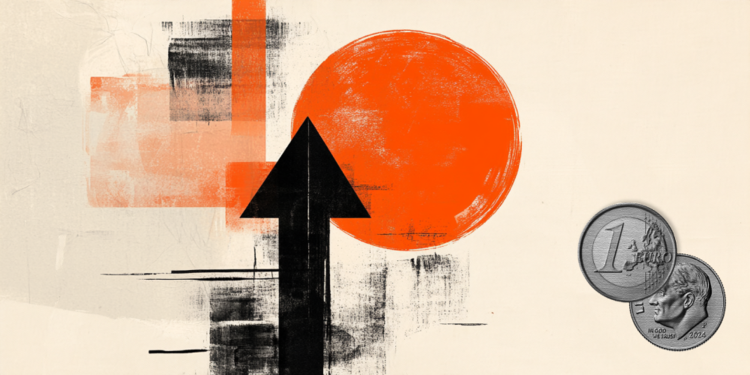Presented at the end of August, the Budget Guidelines Law for 2023 brought the forecast of the federal government for the payment of precatories next year, in the amount of R$ 17.14 billion, but also with R$ 51.16 billion that will not be paid, and postponed, or “rolled over”, to 2024.
The mechanism is part of the forecasts of the Proposed Amendment to the Constitution (PEC) of Precatórios approved in 2021, bypassing the obligation that the federal government would have to pay about R$ 90 billion in precatories.
You precatory they are “judicial decisions in which you need to pay the amount”, according to Gustavo Fernandes, a professor at EAESP-FGV. In general, they are recognized by the courts in one year, and must be paid off the following year.
PEC of Precatórios
At the time the PEC was discussed, the Minister of Economy, Paulo Guedes referred to the value of precatories as a “spending meteor” , surprised by the volume to be paid after the communication of the Justice. At the time, the government assessed that the amount would withdraw amounts for other expenses in 2022.
At first, the text brought the possibility of splitting the precatories for 10 years. But the approved PEC brought another mechanism.
“From the moment the PEC was approved, it brought a new rite, with a payment ceiling within the expenditure ceiling”, explains Juliana Damasceno, economist at Tendências Consultoria.
This sub-ceiling, called “tetinho” by the government, is revised annually for inflation as measured by the Broad Consumer Price Index (IPCA ), and covers the amounts that would be paid for precatories, according to Fernandes, more intended for higher social classes and companies, and Small Value Requisitions (RPVs), judicial decisions whose payment amount is up to 60 minimum wages.
The biggest novelty, says Damasceno, is that now not every precatory recognized needs to be paid the following year. There is a prioritization of payment of RPVs, and the remaining amount is opened for precatories. What cannot be paid is postponed to the following year.
In 2022, for example, precatories were valued at R$ 42.17 billion. Discounting RPVs, there is room to pay up to R$19.87 billion. That is, R$ 22.31 billion will not be paid this year and will be postponed to 2023.
Next year, there is the sum of these R$ 22 billion with the R$ 51.68 billion in precatories that the government estimates would need to be paid. With this, the total value would be estimated at R$ 73.99 billion. The government forecast, excluding RPVs and with the adjustment for inflation, is able to pay up to BRL 17.14 billion, with BRL 51.16 billion being postponed to 2024.
“When the project was sent, it provided for a 10-year installment plan, that no longer exists. What is happening is postponement. The precatory issued this year and not paid is not paid in installments, it is rolled over to the next year, and if it exceeds the ceiling limit, it is rolled over again”, emphasizes Damasceno.
Fernandes notes that the PEC was not a novelty, with frequent changes via PECs and projects to postpone high amounts of precatories whenever governments, in the three spheres, are faced with the obligation to pay off high amounts.
“There is always pressure from precatories, judicial decisions, and it is difficult to manage this even with forecasts, difficult to predict the amounts that will need to be paid, and if they will be large”, says the professor. For him, the biggest innovation of the new PEC was the link with the spending ceiling s, with fiscal space “delaying payments to make room for year-end spending”.
The PEC also establishes the prioritization criteria for the payment of precatories. First, explains Damasceno, there is a prioritization of court orders in areas such as food and social security. There is then the focus on smaller amounts, and then the chronological order, focusing on settling older decisions.
The amount corresponding to the ceiling is also not administered directly by the government, but by the Union to the Federal Regional Courts (TRFs ), who organize and make payments. The idea is to allocate a larger portion to TRFs that need to pay a higher amount, but Damasceno notes that there is a risk that a common precatory of one court will be paid before the priority of another.
Snowball?
The economist believes that there are still chances of the Federal Supreme Court (STF ) to judge the PEC of the Precatórios as unconstitutional, thus forcing the government at that time to pay off the entire accumulated amount. Fernandes believes, however, that the court should not make this decision, since the amendment changes the Constitution .
Damasceno also sees with concern the fact that the government has not yet regulated part of the effort to pay precatories outside the new ceiling, based on two modalities: meeting of accounts and negotiations with a discount of 40%. So far, there has been only one negotiation, with the municipality of São Paulo, which involved the administration of Campo de Marte .
“The government has not been able to regulate these two modalities, which are bets to reduce liabilities. The government says that there is already a lot of demand for these two modalities, that there is a decree almost ready, but no individual has done it yet because it has not been regulated”, explains the economist.
For her, there is a risk that the PEC will create a “snowball”. “Not only the lack of a high success rate in these two alternatives, but the risk of new precatories. There was significant growth for 2022, but most of the actions are linked to Fundef, and the AGU has already sent official letters about the possibility of new discharges of this order”.
The PEC is valid until 2026, that is, in 2027 the government would need to be obliged to pay all the amount postponed since 2022 that was accumulated.
Fernandes considers, however, that it is more likely that a new PEC will end up being proposed to again postpone this payment, following the pattern of other governments.
“In the short term, it is insoluble, in the medium and long term it is expected that with fewer reversals, changes, it would have fewer liabilities and would be able to pay the precatories, but we are not heading towards that”, he emphasizes.
For the professor, the issue of precatories “is already a snowball, it is already a gigantic volume. On the verge of not being able to pay, you will postpone it with other PECs, so you must have another problem later with payment and then there will be another PEC postponed”.
“It is a complex issue, it would have to be managed well. The people who receive these values are of higher income, and these values are privileged too much, from the social point of view, it privileges the most risks, but from the individual it is harming these people, it is something unfair”, he says.
Damasceno points out that the project represents “the government admitting that it cannot pay above a certain amount, which is bad for the business environment. It does not attract investors due to the lack of guarantee of payment, even if final.
Source: CNN Brasil
Joe Jameson, a technology journalist with over 2 years of experience, writes for top online news websites. Specializing in the field of technology, Joe provides insights into the latest advancements in the industry. Currently, he contributes to covering the world stock market.







